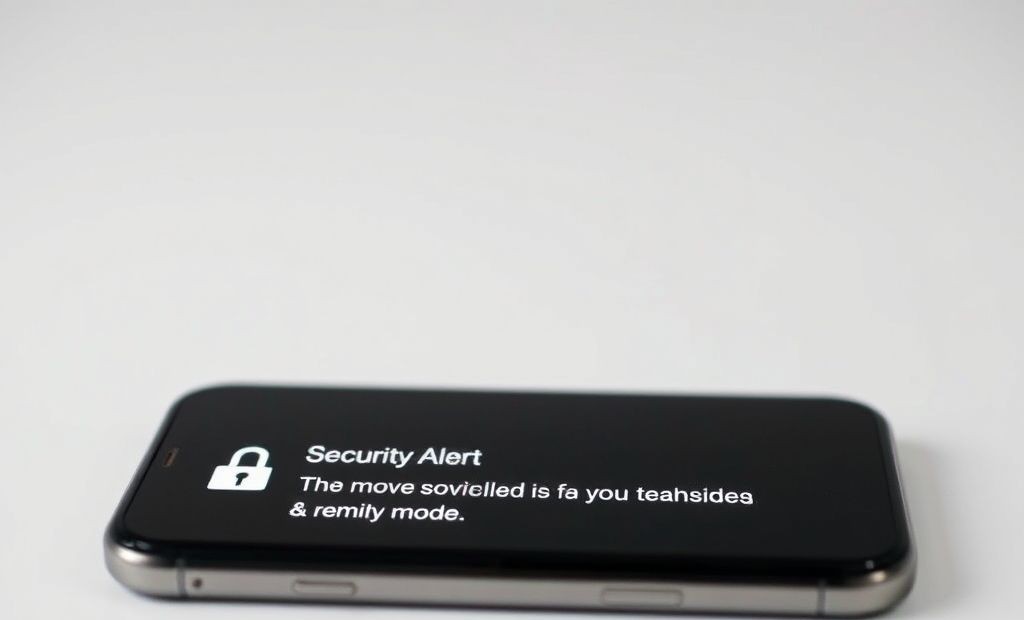Stop SIM Swapping: Protect Your Cell Phone Number

Protect Your Cell Phone from SIM Swap Attacks SIM swapping is a type of account takeover fraud where criminals transfer your phone number to a...
⏱️ Estimated reading time: 3 min
Latest News
Protect Your Cell Phone from SIM Swap Attacks
SIM swapping is a type of account takeover fraud where criminals transfer your phone number to a SIM card they control. This allows them to intercept your calls, SMS messages, and one-time passwords (OTPs), giving them access to your online accounts, including bank accounts, social media, and email. Securing your cell phone number is crucial in today’s digital landscape.
Understanding SIM Swap Attacks
In a SIM swap attack, fraudsters typically use social engineering techniques to trick your mobile carrier into transferring your phone number to a SIM card they own. They may impersonate you, providing false information to bypass security measures. Once they have control of your number, they can reset your passwords and gain access to your sensitive information.
Steps to Safeguard Your Phone Number
1. Use Strong, Unique Passwords
Employ strong, unique passwords for all your online accounts. Avoid using the same password across multiple platforms. Consider using a password manager to generate and store complex passwords securely.
2. Enable Two-Factor Authentication (2FA)
Whenever possible, enable two-factor authentication (2FA) for your accounts. While SMS-based 2FA is better than nothing, consider using authenticator apps like Google Authenticator, Authy, or Microsoft Authenticator for added security. These apps generate time-based codes that are more resistant to interception. Explore alternatives that offer hardware security keys.
3. Set Up a PIN or Password on Your Mobile Account
Contact your mobile carrier and set up a PIN or password on your account. This adds an extra layer of security, making it more difficult for fraudsters to impersonate you and transfer your number. Verizon, AT&T, and T-Mobile all offer options for securing your account with a PIN or password.
4. Be Wary of Phishing Attempts
Stay vigilant against phishing attempts. Fraudsters may try to trick you into revealing your personal information through fake emails, text messages, or phone calls. Never share your passwords, PINs, or security codes with anyone. Double-check the legitimacy of any requests for information before providing it.
5. Monitor Your Accounts Regularly
Keep a close eye on your bank accounts, credit cards, and other online accounts for any suspicious activity. Report any unauthorized transactions or changes to your passwords or contact information immediately. Regularly check your mobile account for any unauthorized changes or SIM card activations.
6. Consider a Port Freeze
Some mobile carriers offer a port freeze or transfer lock, which prevents your phone number from being transferred to another carrier without your explicit authorization. Contact your carrier to see if this option is available and consider enabling it for added security.
7. Use Biometric Authentication
Where available, utilize biometric authentication methods such as fingerprint scanning or facial recognition to secure access to your mobile device and sensitive apps. Biometrics add an extra layer of protection beyond passwords and PINs.
8. Explore Account Recovery Options
Familiarize yourself with the account recovery options for your important online accounts. Set up recovery email addresses and phone numbers that are different from your primary contact information. This can help you regain access to your accounts if they are compromised.
9. Educate Yourself and Others
Stay informed about the latest SIM swap tactics and other cybersecurity threats. Share your knowledge with friends, family, and colleagues to help them protect themselves as well. Awareness is a crucial defense against cybercrime.
Related Posts
Bluesky Enhances Moderation for Transparency, Better Tracking
Bluesky Updates Moderation Policies for Enhanced Transparency Bluesky, the decentralized social network aiming to compete...
December 11, 2025

Google Maps: Gemini Tips, EV Charger Predictions & More!
Google Maps Gets Smarter: Gemini Tips & EV Updates Google Maps is enhancing user experience...
December 9, 2025

US, UK, Australia Sanction Russian Web Host
Crackdown on Russian ‘Bulletproof’ Web Host The United States, United Kingdom, and Australia have jointly...
December 6, 2025











Leave a Reply